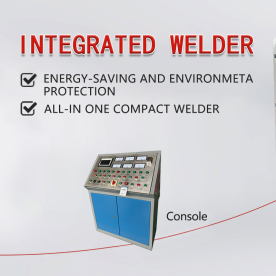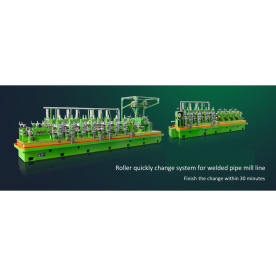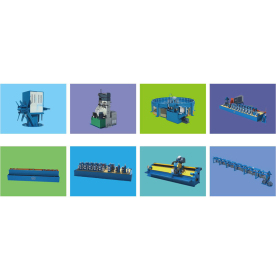[Pipe mill production line]A Comprehensive Overview of the Pipe Mill Production Line: Enhancements, Technologies, and Industry Applications
News 2025-1-12

A Comprehensive Overview of the Pipe Mill Production Line: Enhancements, Technologies, and Industry Applications

A Comprehensive Overview of the Pipe Mill Production Line: Enhancements, Technologies, and Industry Applications
Understanding the Pipe Mill Production Line
A pipe mill production line is a series of interconnected machines and processes that transform raw materials into finished pipes. This line typically encompasses several stages, including material preparation, forming, welding, and quality control. The line can produce various types of pipes, such as seamless, welded, and spiral pipes, catering to a wide range of industrial needs.

A Comprehensive Overview of the Pipe Mill Production Line: Enhancements, Technologies, and Industry Applications
1. **Raw Material Handling**: The production process begins with the procurement of raw materials, often in the form of coils, sheets, or billets. Operators must ensure that the materials meet specific quality standards before they enter the production line.
2. **Forming Equipment**: After the raw materials are prepared, they are fed into forming equipment, where they are shaped into the desired pipe geometry. This can include tube mills, which rely on a series of rollers and dies to form the pipe, often with the aid of computer numerical control (CNC) technology for precision.
3. **Welding Systems**: Once the pipes are formed, they are welded together to create a seamless or continuous structure. Welding technology has evolved significantly, with options including high-frequency induction welding, laser welding, and submerged arc welding. The choice of welding method depends on factors such as the material being used and the intended application of the final product.
4. **Cooling and Finishing**: After welding, pipes often undergo cooling processes to ensure structural integrity. This is followed by finishing processes, which may involve polishing, coating, or heat treatment to enhance the pipes' durability and performance.
5. **Quality Control**: Quality assurance is a crucial aspect of the pipe mill production line. Various tests, including ultrasonic testing, X-ray examination, and hydraulic testing, are employed to ascertain the quality of the finished pipes. This step ensures that the products meet the necessary industry standards and regulations.
Technological Advancements
Technological advancements have significantly improved the efficiency and quality of pipe production. Innovations, such as automation and smart manufacturing, have integrated robotics and artificial intelligence into the production line, allowing for real-time monitoring and adjustments. These advancements lead to reduced lead times, minimal waste, and consistent product quality.
Moreover, the introduction of advanced materials has influenced the design and capabilities of pipe mill production lines. High-strength materials, corrosion-resistant alloys, and plastics have expanded the range of applications for pipes, thus requiring manufacturers to adapt their production processes accordingly.
Industry Applications of Pipe Mill Production Line
The versatility of the pipe mill production line allows for a diverse range of applications across various sectors:
- **Construction**: Pipes are essential for structural, plumbing, and drainage applications in buildings and infrastructure projects. - **Oil and Gas**: The industry relies heavily on pipes for transporting oil, gas, and other fluids. Specialized pipe mill production lines cater to the need for high-pressure and high-temperature resistance.
- **Water Management**: Water supply pipelines are crucial for municipal systems, agricultural applications, and industrial processes. High-quality, durable pipes are necessary to ensure reliable transportation of water.
- **HVAC Systems**: Pipes manufactured through these production lines are used in heating, ventilation, and air conditioning systems, providing efficient temperature control in buildings.
Conclusion
The pipe mill production line plays a pivotal role in the modern manufacturing landscape, providing essential components for a wide range of industries. With ongoing technological advancements and growing demand for high-quality products, the future of pipe production appears promising. Manufacturers who embrace innovation and prioritize quality will undoubtedly succeed in this competitive environment, ensuring that the pipes become increasingly integral to the infrastructure and utilities that support our daily lives.
